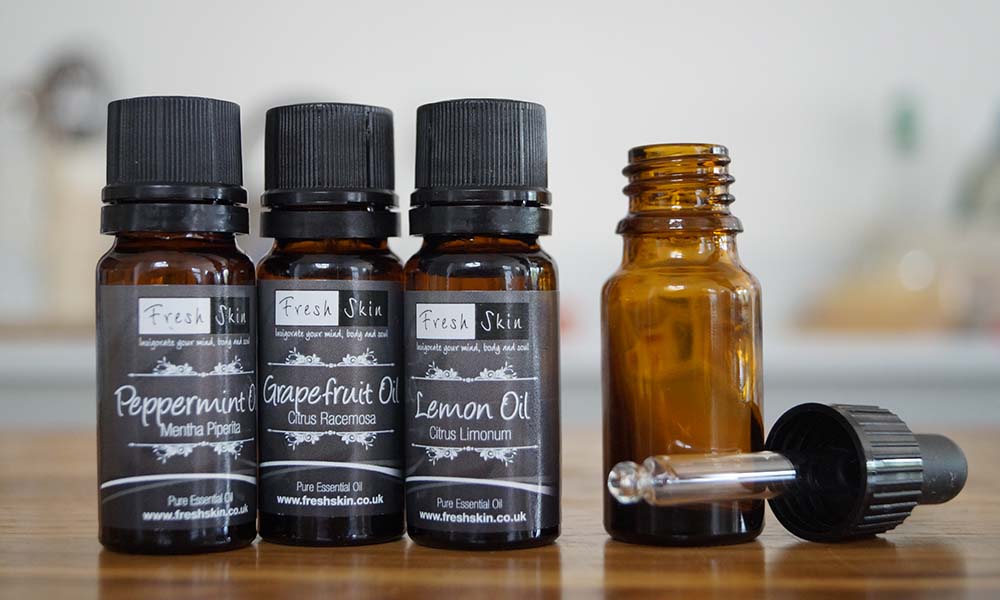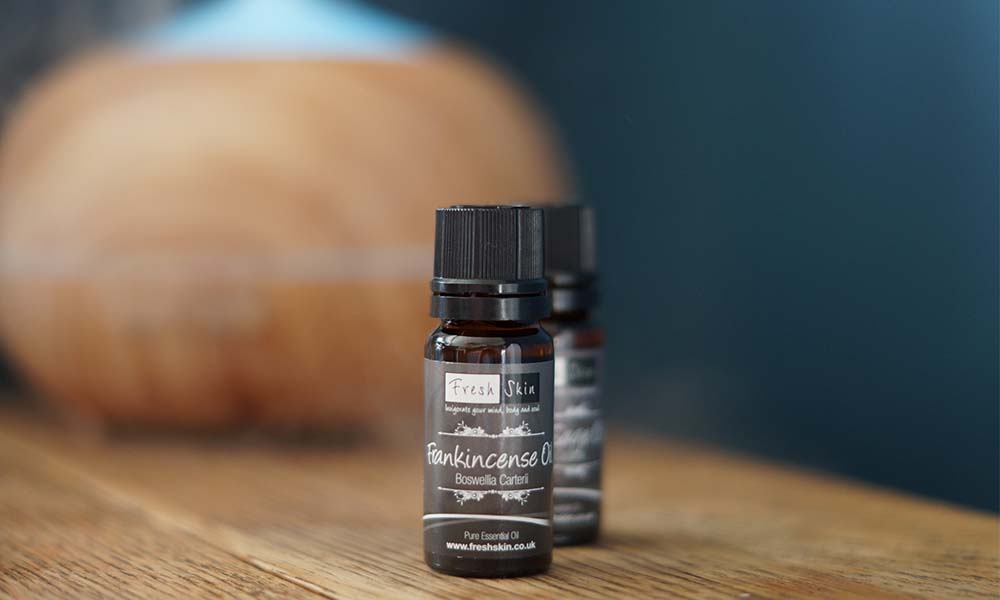Aromatherapy, Essential Oils
Essential Oil Notes Explained
If you’ve ever tried to describe the scent of an essential oil to a friend, you’ll know it can be a tricky business. That’s why you’ll often hear an essential oil described as a top, middle or base note oil. In the world of perfumery, each scent is assigned a note to help classify its fragrance and strength. These notes are applied to every essential oil, helping us to understand where they sit on the perfume scale in relation to other oils.
If you’re thinking of blending your own essential oil recipes, it’s important that you understand which oils are top, middle and base notes, and which ones blend well with others. Once you get an idea of the different essential oil notes, blending gorgeous scents will become a whole lot easier.

What is a top note essential oil?
Let’s start with the top note essential oils. If you take an essential oil and inhale its scent, you’ll always notice the top notes first. Top notes tend to be light and fresh, and often provide an instant little lift. The top notes of a fragrance are usually the first to evaporate, so they don’t last for as long as the middle and base notes of a scent. For this reason, they can be cheaper than essential oils scaled as middle or base notes.
Some of the most popular top note essential oils include bergamot, sweet orange and eucalyptus. Most of the citrus essential oils are top notes, so scents like lemon and grapefruit also belong to this category. Bergamot is one of our most popular essential oils for blending. Its scent is powerful enough to hold its own when mixed with other fragrances, yet light enough to form the playful top note of a recipe.
They say first impressions are everything, and the same applies to essential oils. Remember that the top note essential oils are the first scent people will notice in your blend. These guys awaken the senses and give a little mood boost before quickly fading as the middle and base notes begin to take over.

What is a middle note essential oil?
As the scents of the top notes fade away, the middle note essential oils will make themselves known. Most essential oils are middle notes, and they’re super important because they act as the main body of every blend. Middle notes are longer lasting than top notes, so they’re often more concentrated than the other note oils. The fragrance of a middle note essential oil can last for up to two hours, so it’s vital that you pick them carefully.
Freshskin middle note essential oils include lavender, tea tree and rosemary. When blending, have a think about any effects you’d like your recipe to have on those who breathe it in. Middle note oils are usually blended from flowers and trees, and so they’re often favoured for more than just their scents in aromatherapy. It’s thought that many of the middle note oils are particularly beneficial for the mind or body (or both), so bear any benefits in mind when picking your blend’s core scent.
Lavender is a great example of a middle note scent with benefits. This go-to middle note oil is often used to reduce stress, help with sleep and instil a feeling of calm. Middle note essential oils are often used to achieve calm, reduce pain and improve the health of the skin.

What is a base note essential oil?
The base note essential oils are the fragrances that linger for the longest. Because they’re made from heavier molecules, these oils will last much longer before they evaporate. In a homemade perfume, the base note essential oils will form the lasting scent that embodies the entire fragrance.If you’ve ever tested a perfume on your skin, you may have noticed that it smelt different when you got home to when you first sprayed it on. That’s because the top notes have long evaporated, and only the base notes are left. Always take your time when choosing your base note essential oils, as these deeper scents are going to form the crux of your oil blend.
Popular base note essential oils include frankincense, peppermint and ylang ylang. If you’re blending your recipe, make sure you check out how each base note fragrance works with another. Other base note essential oil examples include jasmine, vetiver and clary sage.
If your base notes work in harmony, you’ll be on your way to creating a sumptuous blend that makes you feel fantastic.Because they’re often rich, base note essential oils tend to have a real effect on our mood, so your base note will really have an impact on how your blend makes you feel.
Blending essential oil notes
Blending your favourite oils is always exciting, but it pays to be mindful of which essential oil notes you’re using for your recipes. If in doubt, choosing an oil from each note will give you a balanced scent that evolves over time.
Always remember that you’ll smell the top notes first, then the rounded middle notes, before being left with the lingering base note. Getting to grips with the different notes for essential oils is the first step to creating your own essential oil blends with confidence.
Try not to overthink it. Start by checking an essential oil notes list to see which of your favourite scents are top, middle and base oils. Then, pick one of each and just make sure their aromas work well together.
Essential oil notes chart
To help you on your way, we’ve put together a handy essential oil notes chart. Have a quick check to see where your favourite oils scale on the essential oil notes list before you start blending. You can take your time to choose oils that will mix well together, resulting in a balanced blend that smells fantastic. In time, you’ll get to know your essential oil notes like the back of your hand, but until then, here’s the chart…
Essential Oil |
Note |
| Bergamot | Top |
| Basil | Top |
| Eucalyptus | Top |
| Grapefruit | Top |
| Sage | Top |
| Lemon | Top |
| Lemongrass | Top |
| Lime | Top |
| Sweet Orange | Top |
| Petitgrain | Top |
| Pine Needle | Top |
| Spearmint | Top |
| Citronella | Top/Middle |
| Lavender | Top/Middle |
| Rose Geranium | Middle |
| Geranium | Middle |
| Palmarosa | Middle |
| Coriander | Middle |
| Cinnamon Leaf | Middle |
| Clove | Middle |
| Nutmeg | Middle |
| Cypress | Middle |
| Juniper Berry | Middle |
| Chamomile | Middle |
| Clary Sage | Middle |
| Marjoram | Middle |
| Oregano | Middle |
| Rosemary | Middle |
| Tea Tree | Middle |
| Red Thyme | Middle |
| Black Pepper | Middle/Base |
| Ylang Ylang | Middle/Base |
| Peppermint | Base |
| Frankincense | Base |
| Cedarwood Atlas | Base |
| Patchouli | Base |
| Sandalwood | Base |
| Vetiver | Base |

